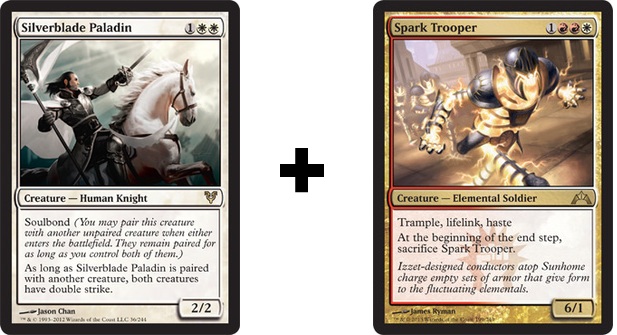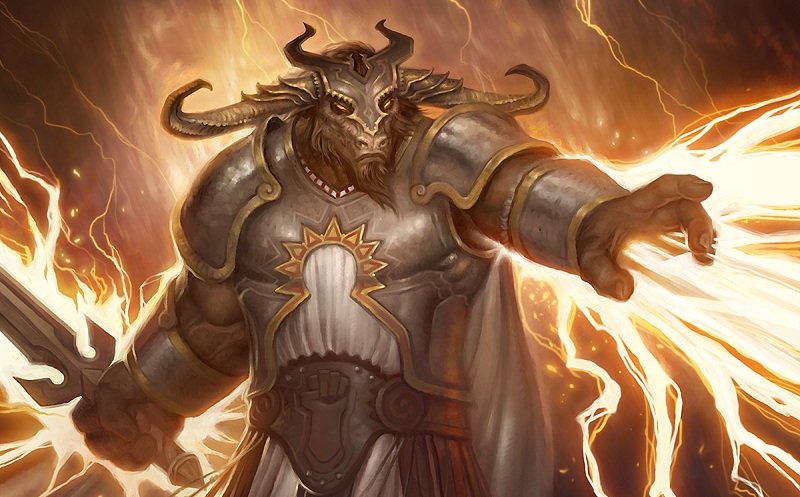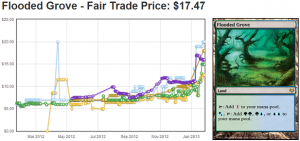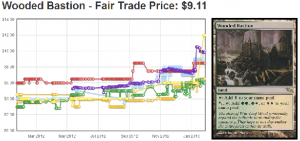MTG & The Dangers of Third-Party Speculation

Following speculative advice, regarding uptrending investment targets in the MTG market, is a very risky practice; one that I advise nobody – but the well seasoned – to rely on. This warning extends beyond basic rule isolation of game theory: there seem to be few of us speculators, and many hype-investors. If you want to make the largest profits possible: do your own homework, and cash-in/cash-out before anybody sees you doing it. These hype-investors rush to accumulate plethoras of cards that speculators are stocking; after we’ve already cleared the bottom level of the market – So what’s the difference between us? That’s simple: I have multiple outlets for reselling my singles, and a friendly reputation as a strong trader/player in my community. I never acquire stock unless I’m confident in my capacity to generate a profit from it within a desired margin of time.
Hype-investors, on the other hand, usually end up jumping onto the caboose of new trends; this is because they’re mimicking our speculative purchasing patterns. Again, why is that bad? And again, that’s simple: let’s assume that I’ve speculated the price of ‘Card X’ is going to increase and decide to buy 200 copies for $0.25; then, after I’ve bought my 200 copies: the price jumps to $.50 and hype-investors acquire 200-500 copies for themselves. As soon as ‘Card X’ hits $0.50, I put mine back into the market, and am bought out – making a 200% ROI. After the excitement dies down, the price of ‘Card X’ will likely drop to $0.35, which is still a near 30% increase from its baseline; however, the hype investors have now lost $0.15 (30%) on each card – and they don’t want to eat a loss – so what do they do?
–
They take one of two risks, generally: 1, they attempt to buy out the current market; and if successful usually end up with a large stock of stagnant goods, which inflates the price of cards that simply don’t command their retail tags, or 2, they sit on their newly acquired stock, hoping for the market to slowly dry out, and similarly: sit on stagnant goods; taking a long time to profit, if ever. Because most hype-investors take one of these two risks, they harm their fellow investors in the process. And for obvious reasons, this type of financial competition between resellers/investors is bad news for casual players and consumers in general.
People taking the first risk I mentioned will be thwarted by people taking the second risk: if they buy the market out of ‘Card X’ at a rate of $0.35, and raise them all to $0.75, they’ll be making a profit on the initial stock of ‘Card X’ that was purchased for $.50, and also from the newly acquired stock that was purchased for $0.35 – BUT, if they do so and list ‘Card X’ for $0.75, surely whoever took the second risk will list all of theirs at $0.60 – $0.70, shortly after; and it becomes this cat and mouse game of people cashing into others who are seeking to corner the market; and this back and forth consumption of demand based value does nothing but increase the value in false effect: the tangible value of an item increases as the demand, and thus the exchange of it does as well. But the consumption and exchange of trend-cards, which raise their value, occurs mainly between resellers and not end-user players – thus creating a hollow egg of perpetually feigned scarcity. So please, be careful, and assess the market wisely; nobody is going to give you their get-rich-quick tips; this really is a market of micro-econ, and player knowledge – it’s easy to get burned when following the advice of others if you’re unable to confirm their assertions (mine included). This will conclude my fourth installment, thank you all for reading.
Money Ramp Weekly Tip:
[Buy as many Burning-Tree Emissary as possible for $0.50 – people sell ’em left and right]
Until next time,
Zack R Alvarado
zackalvarado@gmail.com
Twitter: Rh1zzualo





